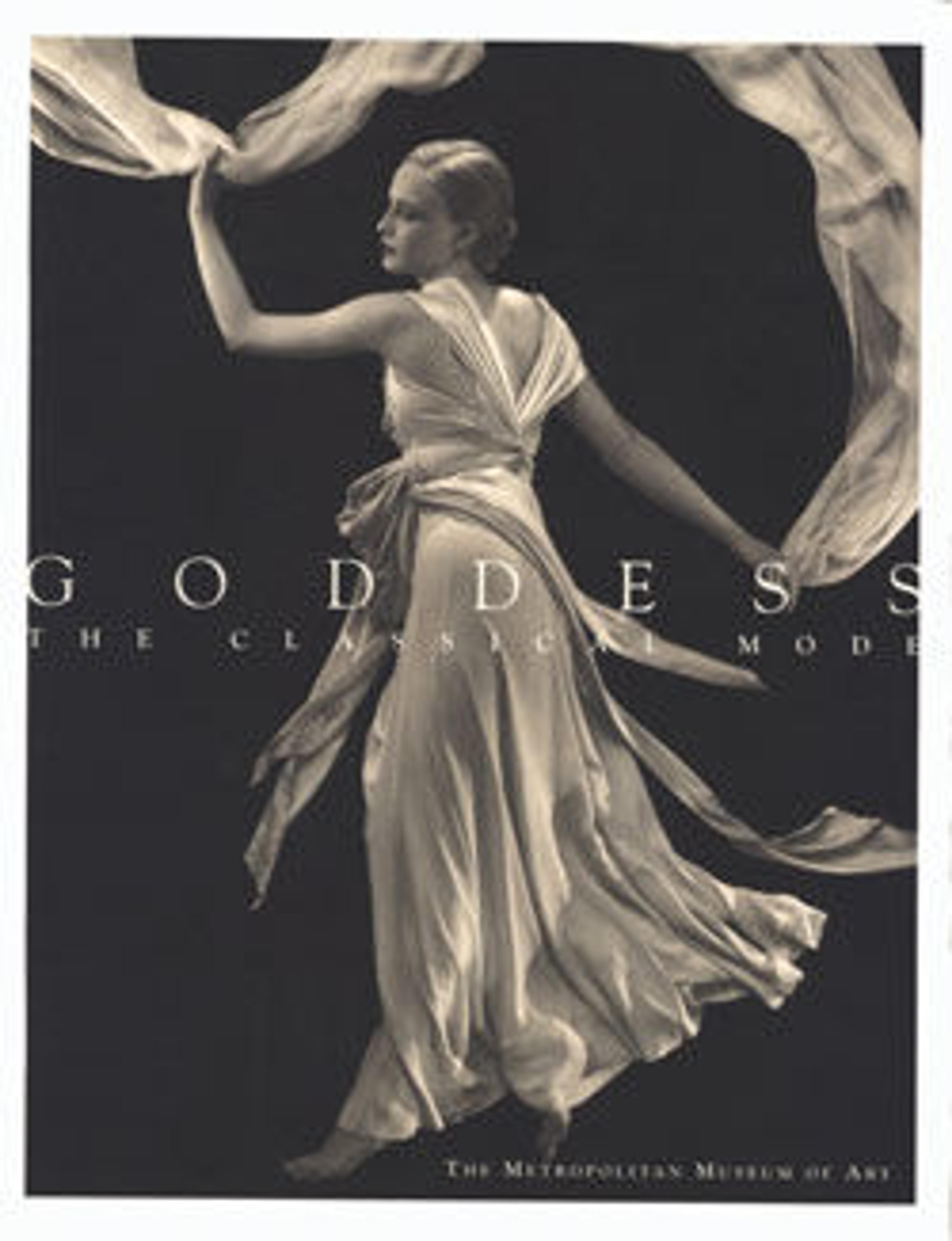Dress
Raymond Duncan, the brother of Isadora, was always a fervent advocate of classical dress. So fanatical was his belief in the healthfulness of Grecian styles that Duncan had his son walk through Central Park in mid-winter clad only in a short chiton, chlamys, and sandals—an incident for which he was charged with the endangerment of a child. In ancient Greece, women were more substantially covered than men. A sleeveless woolen peplos or, as in the dress shown here, a tunic could be donned over a sleeved or sleeveless linen chiton. For this ensemble designed for his wife, Duncan hand-painted the overtunic. In place of a chiton, he substituted a similarly constructed but wider chiffon underdress. The pairing of an opaque tussah silk and a sheer chiffon is more evocative of nineteenth-century artistic conceits than it is of any antique Hellenic evidence. In addition, the pattern of the tunic is more closely aligned with the taste of the early twentieth-century Aesthetic Movement than it is with the patterns from classical Greece. The apples, grapes, and leaves, with their faint evocation of Dionysian pastoralism, are rendered in the Arts and Crafts style.
Artwork Details
- Title: Dress
- Designer: Raymond Duncan (American, San Francisco, California 1874–1966 Cavalaire)
- Date: 1920s
- Culture: American
- Medium: silk
- Credit Line: Isabel Shults Fund, 1990
- Object Number: 1990.152
- Curatorial Department: The Costume Institute
More Artwork
Research Resources
The Met provides unparalleled resources for research and welcomes an international community of students and scholars. The Met's Open Access API is where creators and researchers can connect to the The Met collection. Open Access data and public domain images are available for unrestricted commercial and noncommercial use without permission or fee.
To request images under copyright and other restrictions, please use this Image Request form.
Feedback
We continue to research and examine historical and cultural context for objects in The Met collection. If you have comments or questions about this object record, please contact us using the form below. The Museum looks forward to receiving your comments.
